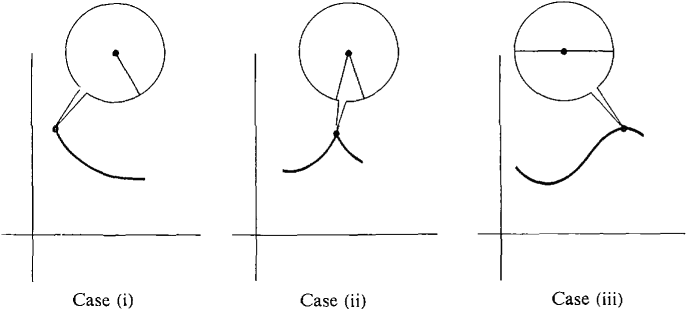| The ebook Elementary Calculus is based on material originally written by H.J. Keisler. For more information please read the copyright pages. |

|

Home  Continuous Functions Continuous Functions  Maxima and Minima Maxima and Minima  Critical Point Theorem Critical Point Theorem |
|






|
|
Critical Point Theorem
The use of the derivative in finding maxima and minima is based on the Critical Point Theorem. It shows that the maxima and minima of a function can only occur at certain points, called critical points. The theorem will be stated now, and its proof is given at the end of this section. CRITICAL POINT THEOREM Let f be continuous on its domain I. Suppose that c is a point in I and f has either a maximum or a minimum at c. Then one of the following three things must happen:
We shall say that c is a critical point of f if either (i), (ii), or (iii) happens. The three types of critical points are shown in Figure 3.5.4.
Figure 3.5.4: Critical Point Theorem When I is an open interval, (i) cannot arise since the endpoints are not elements of I. But when I is a closed interval, the two endpoints of I will always be among the critical points. Geometrically the theorem says that if f has a maximum or minimum at c, then either c is an endpoint of the curve, or there is a sharp corner at c, or the curve has a horizontal slope at c. Thus at a maximum there is either an endpoint, a sharp peak, or a horizontal summit. The Critical Point Theorem has some important applications to economics. Here is one example. Some other examples are described in the problem set.
|
|
Home  Continuous Functions Continuous Functions  Maxima and Minima Maxima and Minima  Critical Point Theorem Critical Point Theorem |
|
Last Update: 2006-11-24


